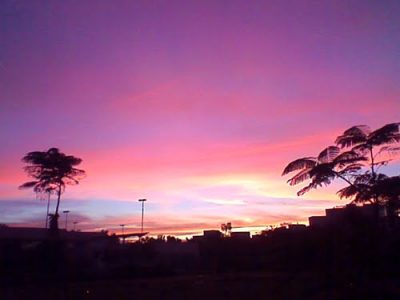Through song and colour, Maitreyee B Chowdhury evokes the shifting sands between multiple identities and identity crises. An exploration made real, as voluntary and involuntary migration are both on the rise in India and in many parts of the world.
It was late evening in Bangalore. A ten year old young boy picks up the microphone and breaks into a song. This, a few weeks ago where I was a part of Onam celebrations by Malayalee friends. The song was Holud Pakhi, originally made famous by a popular Bangla band, Cactus. It evoked the carefree days of childhood, spent watching a yellow bird on a tree in one’s neighbourhood.
Looking at his face while singing the song, I found it rather strange that a ten year old would choose a song which gets its core pull from a wistfulness about childhood days. But then I thought, he had moved recently from Kolkata and could nostalgia mean the name of a yellow bird, for him or his family? I looked around the room to see our male Malayalee friends clad in crisp white Mundus, and the women in elegant white Kerala cotton sarees. Irrespective of white being the colour of their nostalgia, they seemed to get Holud Pakhi and the pull it exerted over the boy.
If nostalgia had a colour, mine would be green. A childhood amid the lush forests of Assam ensured that green is the colour of every dream I go back to. I wonder then if we are bound by our little geographical coloured boxes that define our songs, colours, poetry, jungles and weather into one long loop, which echo through our lives, whenever we might seem to need their presence, in reassuring who we essentially are. Soon millions of Bengalis shall celebrate Durga Puja, invoking the goddess to come down to earth and bless them. This shade of celebration has a colour too – red. The world over, Bengali women shall wear the white and red saree, recalling in many cases, the earthy red of their soil with affection. If Lal Pahrere deshe Ja can remind us of the Bengal heartland and a Holud pakhi takes us back to childhood, can trees and rivers too trace a path to a historical communion?
Poetry and song, blended in the colour of the soil, between man and nature, has always been the hallmark of political movements and historical events. One recollects tribal ballads which combine a repetition of chants, description of the colours of flowers and trees, rivers and the battles fought along it, all of which come together to reaffirm an identity that is as much social as political and cultural. For instance, in the late sixties, a song was written by a section of Andhra’s tribals, to protest the killing of young doctor Bhaskar Rao by the police. He had joined the guerrillas and the song traces Dr.Rao’s political actions through different trees native to the landscape. Under theNarenga tree he pledges to kill the ‘class enemy’ and under the Berenka tree he takes up arms. The song which repeats the same sound and rhythm seems to try and instil a certain thread of familiarity with the listeners, one that evokes colour of the earth and with it, rootedness, justifying the fight for the soil to speak. In the end, the singers are supposed to join the refrain which brings them back under the Berenka tree, where they pledge solidarity for the fight to continue. Listening to the colours of this song evoke memories of the tropical jungle which is embedded in the hearts of the people and which only enhances the sense of belonging with the region.
Clearly, while one part of us continues to be open to discovering what being a global citizen could mean, is there another part of us, which when torn by involuntary migration, wars, racism or difference, plonks us at a crossroad; makes us seek out the familiar in great moments of uncertainty; where one is at times forced to contemplate the necessity of clinging to borders, colours and similarities which may seem like a subtle or ferocious attachment to illusory identities? Perhaps in reality, not as illusory or romantic as one would imagine them to be? Or does our search and inevitable realization as nomads eventually turn full circle into the recreation of lost homes that one never really had. And if at all, we are compelled to look back and retell our stories, find our songs, our colours, under those seemingly real identities, how do we tell or even relive them? In a country that is often defined by its heritage, it is perhaps not difficult to imagine many of us nomads, painted by such hues.
Today when homeless Syrian refugees cross political borders of neighbouring nations to escape war, poverty and homelessness, a proud edifice of humanity seems to collapse before our very eyes; communities around the world are forced to confront their collective sense of borders, both imagined or real, and live within such new and old boundaries, the colour of which only the soul remembers. For our children whom we leave behind, we leave colours traced in blood, soil and sea sides, in borders bounded by stories, songs and memories of a home that these children might never see but will forever somehow feel. Strangely, living thousands of miles away from the colours that one is made up of doesn’t seem to either fade or wipe out those memories, for those who choose to remember. For a sense of home is a palette of longings, sometimes just one colour, sometimes more.
This article was reproduced with the kind permission of Our Stories and was originally published here



No Comments Yet!
You can be first to comment this post!